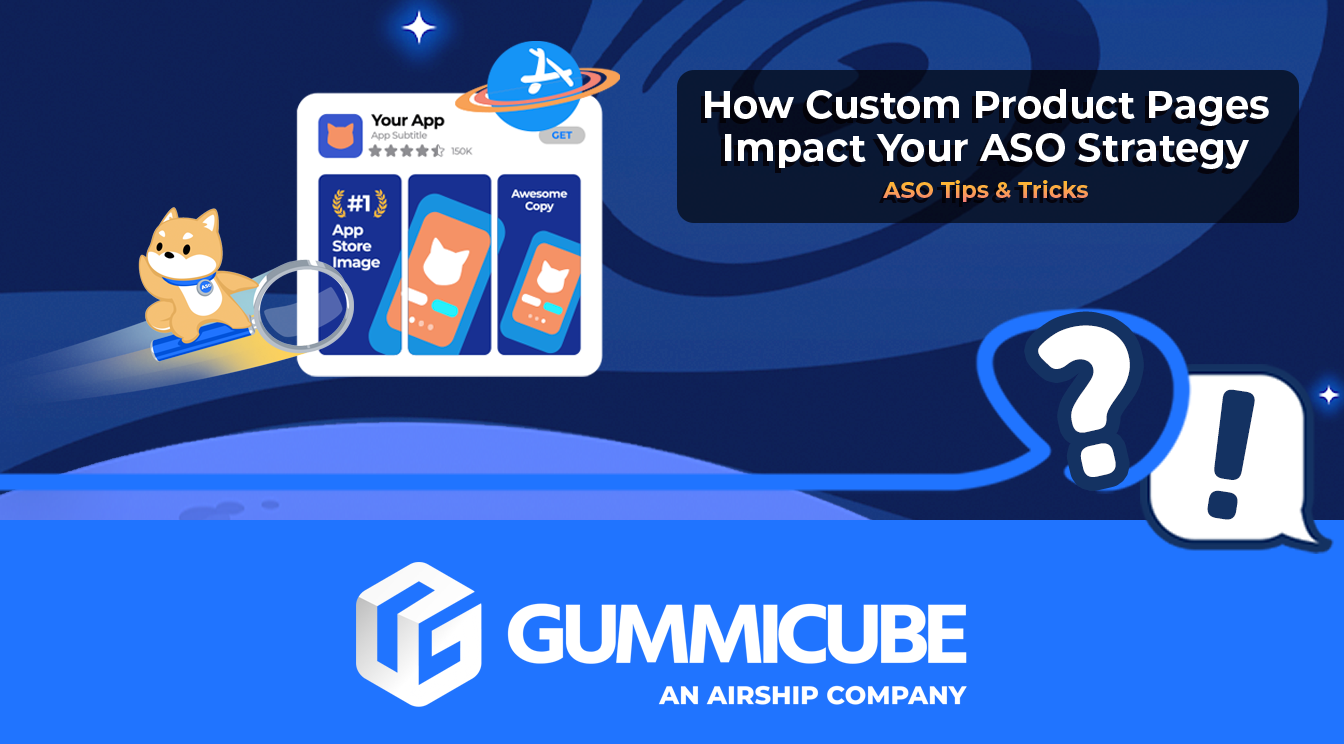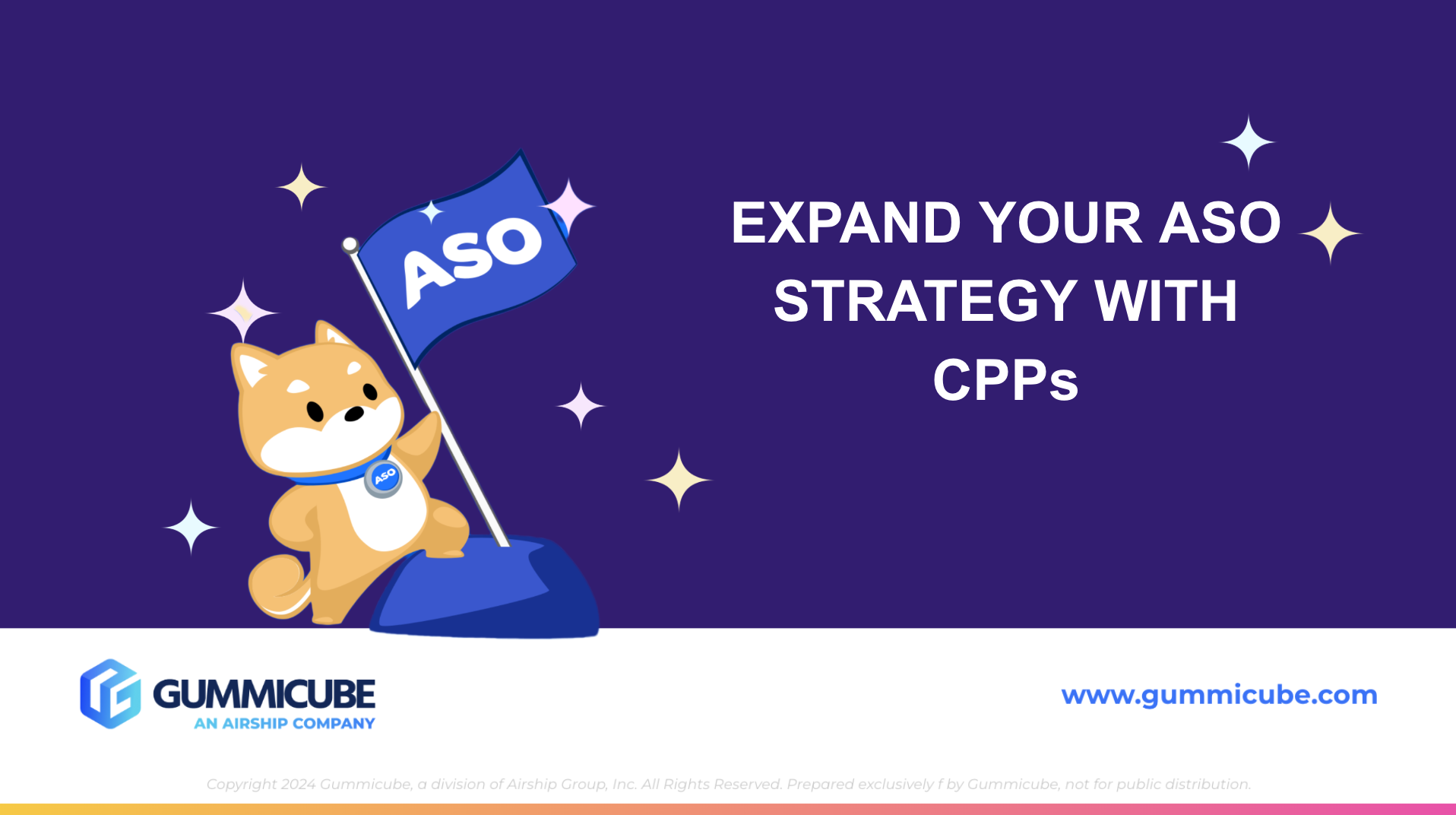
ASO Tips for Enhancing App Screenshots
Posted on December 23rd, 2025
App screenshots are not decorative assets. They are strategic conversion tools that play a critical role in App Store Optimization.

Creating an engaging App Store experience means delivering the right message to the right user at the right time. One of the most effective ways to do that is through Apple’s Custom Product Pages (CPPs). These are critical assets that can shift how users engage with your app, and more importantly, whether or not they decide to install it.
CPPs allow you to build up to 35 unique versions of your App Store product page. Each one can highlight different features, messaging, or app creative assets tailored to specific audiences or acquisition channels. Whether accessed via Apple Ads (formerly known as Apple Search Ads) or direct links from social media, web campaigns, or email marketing, CPPs empower your team to personalize messaging, reduce friction, and drive performance across your App Store Optimization (ASO) efforts.
When promoted effectively, CPPs become a direct response to user behavior, interests, and intent. They turn the App Store from a generic destination into a personalized marketing endpoint. If you are investing in user acquisition or engagement campaigns, CPPs offer a way to close the loop and encourage the user journey to end with an install.
Your product page is often the last stop before conversion. Whether a user finds your app through a paid search ad, a social campaign, or a targeted email, the moment they land on your App Store listing is decisive. If the messaging or creative feels disconnected from the path they took to get there, you increase the risk of bounce. This is where CPPs provide one of their strongest advantages.
Sending every user to the same default product page is inefficient. CPPs allow you to align the final touchpoint with the user’s original intent. That alignment can mean the difference between an install and a lost opportunity. For example, suppose someone clicks on an ad highlighting your app’s newest features; the landing experience should reinforce that message immediately.
Consistency matters. A well-structured Custom Product Page can reduce app misinformation, build user trust, and increase the perceived value of your app. This is especially impactful in high-competition categories where users often compare multiple apps side by side.
CPPs help users know exactly what the app they are looking at has to offer. They give users a reason to say yes, when they are ready to download.
Apple Ads remain one of the most valuable acquisition tools available to app marketers. But the platform’s full potential is unlocked when paired with Custom Product Pages (CPPs). Rather than sending all paid traffic to a single default product page, CPPs allow you to align each keyword group with a storefront that matches the user's intent.
With CPPs, you can tailor messaging, visual elements, and app value to match what users are actually looking for. The ability to have this clarity between CPP and app users reduces friction and can increase the likelihood of app conversion rates.
That precision can also improve the quality of users who convert. When someone lands on a page that directly supports what they searched for, they are more likely to trust the product and take action. It also helps reduce wasted ad spend. If you are paying to bring users to the App Store, you need to make every impression count.
CPPs also give you performance visibility of your app. Apple’s reporting tools allow you to measure results at the page level, so you can identify which storefronts are converting best and why. Those insights feed directly into your broader ASO strategy, helping you optimize campaigns and creative decisions based on actual user behavior.
Different users care about different features. Custom Product Pages give you the ability to speak directly to those differences. This is especially useful for apps that appeal to multiple demographics, use cases, or user personas.
With up to 35 CPPs, you can build a storefront for each audience. Fitness apps, for example, can create one page focusing on macro tracking for nutrition-focused users, another for those interested in social challenges, and a third for users looking for personalized coaching. Each page can emphasize different screenshots, taglines, and value propositions to better match user goals.
The insights you gather from your CPP can inform your main app listing, update your creative elements, and shape your ASO strategy for future optimizations. It becomes a cycle of learning and proactively updating.
The goal is to test, measure, and adapt based on real user behavior while taking the guesswork away.

Custom Product Pages give you more levers to pull when reacting to app market changes or launching new app features. This flexibility can have a massive impact on your ability to move fast and scale intelligently.
Here are just a few strategic use cases where CPPs shine:
This kind of agility is difficult to replicate through a single App Store listing. When you only have one product page, you’re forced to generalize. But with CPPs, you can specialize in up to 35 different stories. Each one is custom-built for the audience you are trying to reach.
Because each CPP is measurable, you no longer have to overhaul your entire App Store presence to try something new. You can isolate your experiments. Test a different screenshot order on one page. Try a new app icon on another. Run different copywriting that emphasizes different app features in different ways.
When one variation outperforms others, you can gain clear insight into the next steps you should take in your App Store listing. This regular testing creates a feedback loop. The more you experiment, the more you learn. And the more you learn, the more refined your entire ASO strategy becomes.
The ability to learn faster than your competitors is a major advantage in the app marketplace. Developers who use CPPs are setting themselves up to get better app conversion rates. If you are not using this feature, your app listing risks falling behind, making it more difficult to test effectively or adapt quickly.
Custom Product Pages are not just a feature within Apple’s App Store. They are a strategic pillar of modern mobile marketing. With the ability to create 35 tailored storefronts, align messaging with acquisition channels, and run tests across different user groups, CPPs give marketers and developers a way to control the entire journey from app discovery to app installl.
If you are spending time and money driving traffic to your app, you cannot afford to ignore what users see when they land. CPPs can reduce user bounce, increase app installs, and transform your App Store presence from passive listing to an active acquisition tool.
Custom Product Pages provide clarity, precision, and a pathway to scale your app to meet your team’s goals. They help you move with purpose instead of reacting with guesswork.
If you are not actively using Custom Product Pages in your ASO strategy, it is time to re-evaluate your strategy. The tools are here. The value is proven. The only question is whether you are ready to put the effort in and make the most of them.
Gummicube’s ASO services specialize in helping apps of all sizes build, test, and optimize Custom Product Pages that drive measurable results. If you're ready to evolve your ASO strategy, let's connect. We're here to help you take full advantage of what CPPs can do.

App screenshots are not decorative assets. They are strategic conversion tools that play a critical role in App Store Optimization.

By evaluating the feedback from a rejected In-App Event, app developers can resubmit and gain approval. If you are looking to refine your IAE, reach out today.

App keyword research is a crucial part of developing a winning ASO strategy. Read more to discover ASO tools & strategies to elevate your app listing.